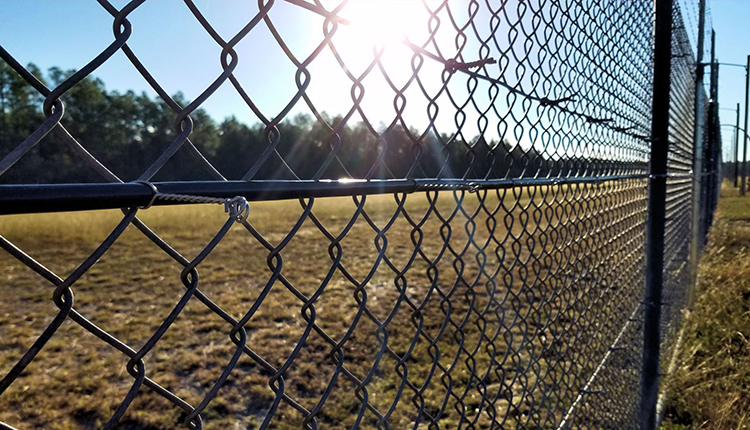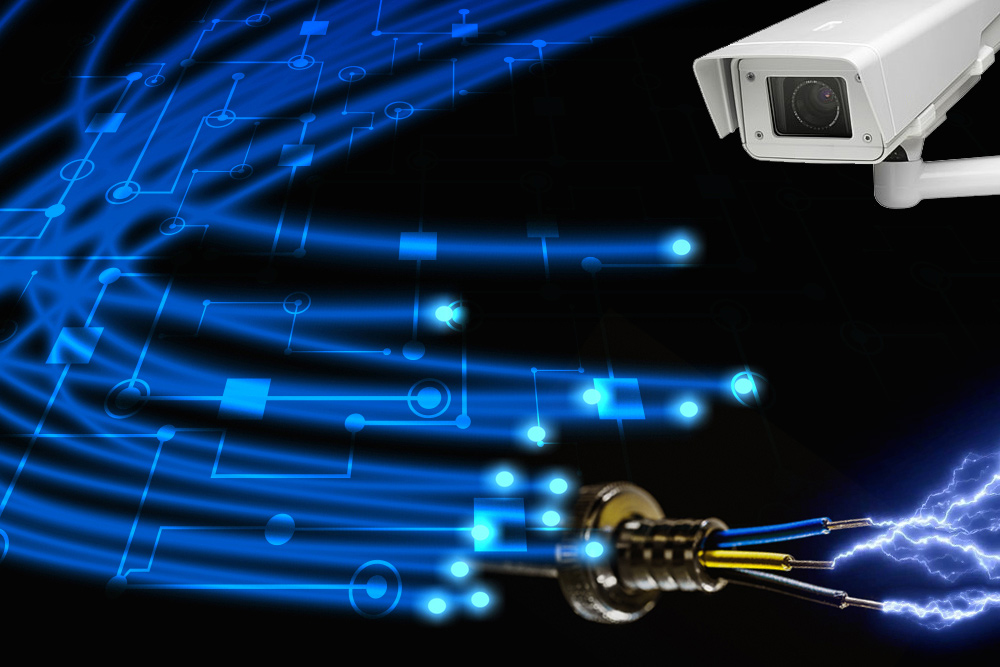Boost Your Safety With Advanced Fiber Optic Security Solutions
In an age where security is paramount, sophisticated fiber optic safety and security systems present a compelling service for improving security throughout various atmospheres. What ramifications do these advancements hold for future protection actions?
Benefits of Fiber Optic Protection
Harnessing the advantages of fiber optic modern technology dramatically enhances security systems across different applications. One of the primary benefits is the raised data transfer capability, enabling the transmission of huge amounts of information at broadband. This is specifically crucial for real-time video clip surveillance, where high-resolution feeds can be sent out without latency, making certain instant feedback capabilities.
Furthermore, optical fiber display exceptional resistance to electromagnetic disturbance, which is essential in settings with possible signal disturbances. This integrity ensures regular efficiency in critical protection procedures. Fiber optic cable televisions are much less susceptible to touching and unauthorized access contrasted to typical copper electrical wiring, therefore improving data stability and privacy.
An additional remarkable benefit is the longevity of fiber optic systems; they are more resistant to ecological elements such as dampness, temperature changes, and corrosive materials. This strength translates to reduce maintenance prices and longer life expectancies for safety setups.
Last but not least, the lightweight nature of fiber optic cables assists in simpler setup and transmitting, particularly in intricate infrastructures (fiber optic security system). Ultimately, the combination of fiber optic innovation into security systems not only reinforces security procedures yet additionally maximizes operational efficiency
Key Features to Think About
When examining fiber optic safety systems, a number of crucial attributes have to be taken into consideration to make certain optimum efficiency and performance. Examine the system's discovery variety and sensitivity; an extensive range permits for checking big areas, while high level of sensitivity makes certain that also minor disruptions are identified immediately.
Next, take into consideration the combination capabilities of the system. A fiber optic security system should flawlessly user interface with existing safety and security measures such as cams and alarm systems, developing a cohesive security network.
Longevity and ecological resistance are also essential functions. Guarantee that the system is designed to hold up against extreme weather problems and potential physical hazards, as this will lengthen its functional life expectancy.

Lastly, explore the scalability of the system. A robust fiber optic security system must be easily expanding to fit future needs without substantial overhauls. By very carefully considering these functions, you can select a fiber optic safety solution that boosts security and safety in your setting.
Setup Refine Review
To efficiently execute a fiber optic protection system, a methodical setup procedure is vital. This procedure begins with a detailed website evaluation to determine the details safety and security demands and to identify ideal areas for fiber optic cables and security devices. Following this analysis, the setup group will create a thorough strategy, consisting of cable pathways, needed tools, and compliance with local guidelines.
Following, the setup entails laying the fiber optic cables, ensuring they are safeguarded from environmental aspects and physical damages. Correct handling strategies are important, as fiber optic cables are sensitive and can be quickly harmed. After the cabling is mounted, adapters and discontinuations are diligently finished to make sure signal honesty.
The succeeding phase contains mounting safety gadgets such as cams, movement detectors, and alarm, all incorporated with the fiber optic network. Extensive screening is carried out to verify that all parts are operating correctly and to make certain ideal performance.

Contrasting Fiber Optic to Standard Solutions
The development of safety and security technology has actually caused considerable advancements in the contrast in between fiber optic systems and standard copper-based systems. Fiber optic systems make use of light to transmit data, using premium bandwidth and speed contrasted to their copper equivalents. This results in boosted information transmission capabilities, making optical fiber optimal for high-resolution video security and real-time tracking.
Furthermore, fiber optic cable televisions are immune to electromagnetic interference, minimizing this the possibility of signal destruction triggered by external aspects. This characteristic makes certain constant efficiency, even in tough environments. In comparison, site here conventional copper systems are more prone to disturbance, causing possible vulnerabilities in protection applications.
Sturdiness is another advantage of fiber optic systems. They are much less prone to harm from ecological elements such as dampness and temperature changes, which can endanger copper wiring. Fiber optics are lighter and thinner, permitting for easier setup and minimized physical impact.
However, conventional systems often tend to have reduced initial costs, making them appealing for budget-conscious jobs. While fiber optic systems might call for a higher upfront investment, their long-lasting advantages-- such as reduced upkeep prices and better reliability-- usually outweigh the initial cost, positioning them as a remarkable option for modern-day protection demands.
Future Fads in Security Technology
Emerging trends in security technology are poised to transform the landscape of monitoring and threat detection - fiber optic security system. As companies increasingly face sophisticated threats, developments such as expert system (AI) and machine discovering (ML) are coming to be important to safety systems. These innovations improve the capability of fiber optic systems by enabling real-time information evaluation, determining abnormalities, and automating responses to possible violations
Furthermore, the integration of the Net of Points (IoT) is transforming security structures. IoT tools can offer comprehensive situational recognition and assist in seamless interaction between different protection parts. This interconnectedness permits much more reliable tracking and faster event feedback times.
Biometric authentication is also getting momentum, providing a higher degree of safety and security via distinct physical attributes. As this innovation progresses, it is likely to be integrated Extra resources into fiber optic systems for improved access control.
Final Thought
Finally, progressed fiber optic protection systems stand for a significant innovation in safety and monitoring technology. Their remarkable transmission capacity, resistance to interference, and durability assist in dependable surveillance and information stability. As these systems incorporate AI and IoT capacities, they enhance the general protection framework, ensuring durable defense for assets. The shift from standard systems to fiber optic solutions reflects a growing pattern in the direction of more reliable and reliable safety and security steps in a significantly intricate technical landscape.